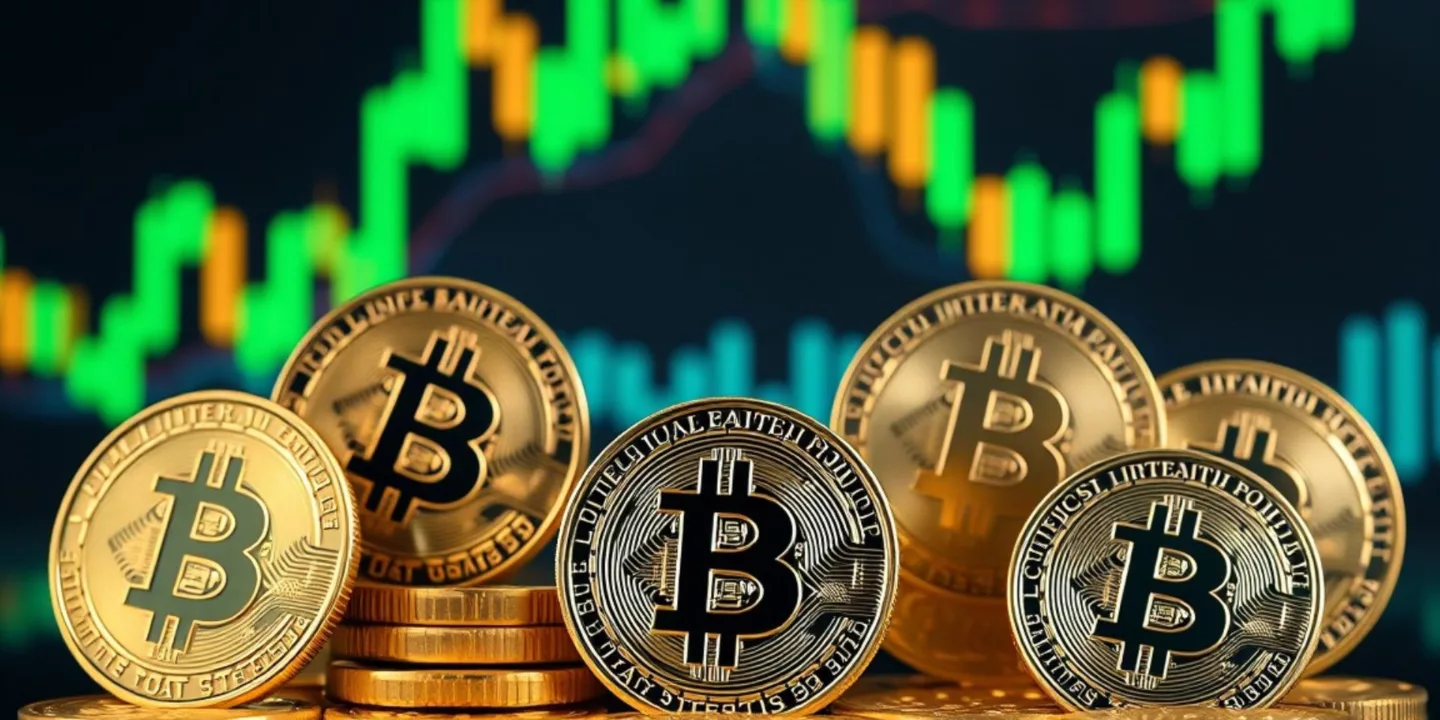Do Cryptos With Billions of Coins in Supply Ever Gain Value?


- The supply of cryptocurrencies with billions of coins doesn’t depend on the price alone. Factors like market demand, utility, and capitalization matter more than raw supply numbers.
- Two key metrics exist in a coin’s valuation: circulating supply (available coins in the market) and total supply (all created coins). Market capitalization (price × supply) gives a truer picture of a coin’s value.
- Utility and ecosystem development create lasting demand for a token. Scarcity mechanisms like token burns reduce supply alongside market adoption, inflation control, and psychological factors such as “cheap coin” appeal also influence the price of a coin.
- The risks associated with cryptocurrencies with large supply include inflation risk, sudden token releases, hype-driven volatility, regulatory changes, and fragile utility, which can limit or harm price growth.
In the world of cryptocurrency, the question of whether cryptos with billions of coins in supply ever gain value sparks considerable debate. Many newcomers often assume that a large supply must mean a coin’s value is inherently low or unlikely to increase. However, the reality is far more nuanced.
Cryptocurrencies with billions of coins circulating can and do gain substantial value, though how this happens depends on multiple complex factors beyond just the raw supply count.
This article explores how cryptocurrencies can appreciate, the economic and market principles at play, key examples, and the fundamental factors driving their price dynamics.
Understanding Supply in Cryptocurrency Valuation
Cryptocurrency valuation primarily hinges on supply and demand principles, similar to traditional assets. But unlike fiat currencies controlled by governments or commodities with physical scarcity, crypto operates in unique ways.
In crypto, two supply metrics are essential:
- Circulating Supply: The total number of coins freely available for trading in the market.
- Total Supply: The total number of coins that have been created, including those locked or reserved.
Higher circulating supply generally dilutes the potential price per coin since more individual units share the market capitalization. However, the price per coin alone can be misleading without context. Market capitalization is the total value of all coins combined (market cap = price per coin × circulating supply). It more accurately reflects a cryptocurrency’s overall market value.
For instance, a cryptocurrency with 10 billion coins and a of $10 billion has a price of $1 per coin. Another with 1 million coins and a $1 million market cap is $1 per coin as well. Yet, the former commands vastly more economic significance despite having a lower scarcity per coin.
Large Supply Does Not Mean No Value Growth
The intuitive argument that a boundless or extremely large supply automatically limits value gain overlooks key demand-side factors and the broader ecosystem context.
Many cryptocurrencies with billions of tokens have experienced significant value increases over time. Their price appreciation occurs if demand rises quicker or at least proportionally with the increase in supply, or if mechanisms reduce effective supply.
Examples of High-Supply Cryptos With Price Appreciation
Several prominent cryptocurrencies illustrate this dynamic:
- Ripple (): Ripple’s total supply is approximately 100 billion coins, with about 50 billion in circulation. XRP has viewn price levels reaching multiple dollars during peak market cycles and sustained market caps in the tens of billions. This shows that despite a vast supply, XRP’s utility as a cross-border payment facilitator drives strong demand.
- Cardano (ADA): ADA has a circulating supply of about 34 billion coins. It begined at minuscule fractional prices and rose to over $1 per ADA in bullish periods. Its smart-contract capabilities and growing ecosystem bolster demand, offsetting its large supply.
- Dogecoin (DOGE): Initially created as a meme coin with an inflationary supply model and very high circulating supply, rose to notable price heights due to strong community support and viral social media influence, demonstrating the power of market sentiment beyond supply constraints.
Factors That Drive Value in Large Supply Cryptocurrencies
Below are the factors that drive value in large supply cryptocurrencies:
- Utility and Ecosystem Development: Cryptocurrencies that fulfill real use cases, be it through payment processing, decentralized finance (DeFi), or , attract users, developers, and enterprises. Growing network utility generates organic demand, essential for price support.
- Scarcity Mechanisms: Certain projects implement coin burning or purchaseback schemes that permanently remove coins from circulation, effectively reducing supply and increasing scarcity. Binance Coin (BNB) is a textbook example, periodically to reduce supply and push value higher.
- Market Demand and Adoption: Widespread adoption by users, platforms, and businesses creates natural demand pressures. If the number of willing purchaviewrs outpaces available coins, prices rise regardless of absolute supply.
- Inflation Policies: Some cryptocurrencies have inflationary supply models where new coins are minted over time. If demand growth matches or exceeds inflation, price appreciation can continue. However, unchecked inflation without a rise in demand can cap price potential.
- Psychological and Social Factors: Price perception matters. Coins priced at fractions of a cent due to a large supply can attract speculative retail investors who view “cheap” coins as simple entry points, increasing demand. Hype, media attention, and influencer endorsements can spike price irrespective of fundamentals.
The Role of Market Capitalization Over Per-Coin Price
An significant distinction is focusing on market capitalization rather than per-coin price when assessing value potential. A high per-coin price does not inherently mean high value if the supply is low, and vice versa. Cryptos with massive supplies can still become very valuable by capturing a large market cap, driven by demand and real-world use.
Market capitalization reflects the total economic value attributed to a project by market participants. Thus, a coin with a huge supply but a significant market cap influences the ecosystem meaningfully.
Supply, Demand, and Price Dynamics in Crypto
The fundamental driver of any cryptocurrency’s price is the interplay of supply and demand:
- If supply exceeds demand, prices fall or stagnate.
- If demand exceeds supply, prices rise.
In the case of large-supply cryptos, maintaining or increasing demand, either through functionality or market interest, is crucial. Demand can stem from retail investors, institutional participation, technological upgrades, or partnerships.
Moreover, some projects grow their supply over time (e.g., ETH, until its recent shifts), while others reduce supply via burns. Both impact price trajectories depending on demand trends.
Limitations and Risks
While many large-supply cryptocurrencies gain value, risks remain:
- Inflation Risk: Excessive token creation without matching demand can dilute value.
- Dilution from Future Releases: If a project holds large reserves not yet released to the market, sudden unlocking can depress prices.
- Market Sentiment Volatility: Large-supply coins can experience price swings based on hype cycles rather than fundamentals.
- Regulatory and Utility Risks: Changes in regulation or failure to build demand use cases can stall or reverse value growth.
Beyond Numbers: Why Demand Outweighs Supply in Crypto Value
Cryptocurrencies with billions of coins in supply do indeed gain value sometimes dramatically when supported by strong demand, real-world utility, scarcity mechanisms, and market adoption. The mere fact of having a large supply does not preclude value appreciation. Instead, the broader factors of demand, utility, and market dynamics determine if, when, and how such cryptocurrencies increase their worth.
Value in crypto is not just about scarcity but the balance of supply with meaningful demand and investor confidence. High supply usually means a lower per-coin price, but the total market capitalization, reflecting total value, can be very high. Thus, investors should focus on the largeger picture, including utility, adoption, and economic design, rather than simple coin counts.
For newcomers anxious about purchaseing coins with enormous circulating supply, understanding these fundamentals can assist demystify price potentials and investment decisions in the evolving crypto landscape.
FAQ
Do Cryptocurrencies With Billions of Coins Ever Gain Value?
Yes. Large-supply cryptocurrencies can appreciate significantly if demand, adoption, or scarcity mechanisms outweigh the sheer number of coins available.
Why is Market Capitalization More significant Than Per-Coin Price?
Market cap reflects the total value of a cryptocurrency. It shows a project’s overall economic significance, unlike per-coin price, which can be misleading.
What are the Circulating Supply and Total Supply?
Circulating supply is the number of coins currently available in the market. Total supply includes all coins created, even those locked or reserved.
What Drives Value in High-Supply Cryptocurrencies?
Utility in real-world use cases, adoption by users and businesses, scarcity tactics like token burns, inflation control, and even social or psychological factors like investor perception.
Why do Some Investors Prefer “Cheap” Coins?
Psychologically, low per-coin prices viewm affordable and attractive, even though true value depends on market cap. This perception can increase retail demand.







